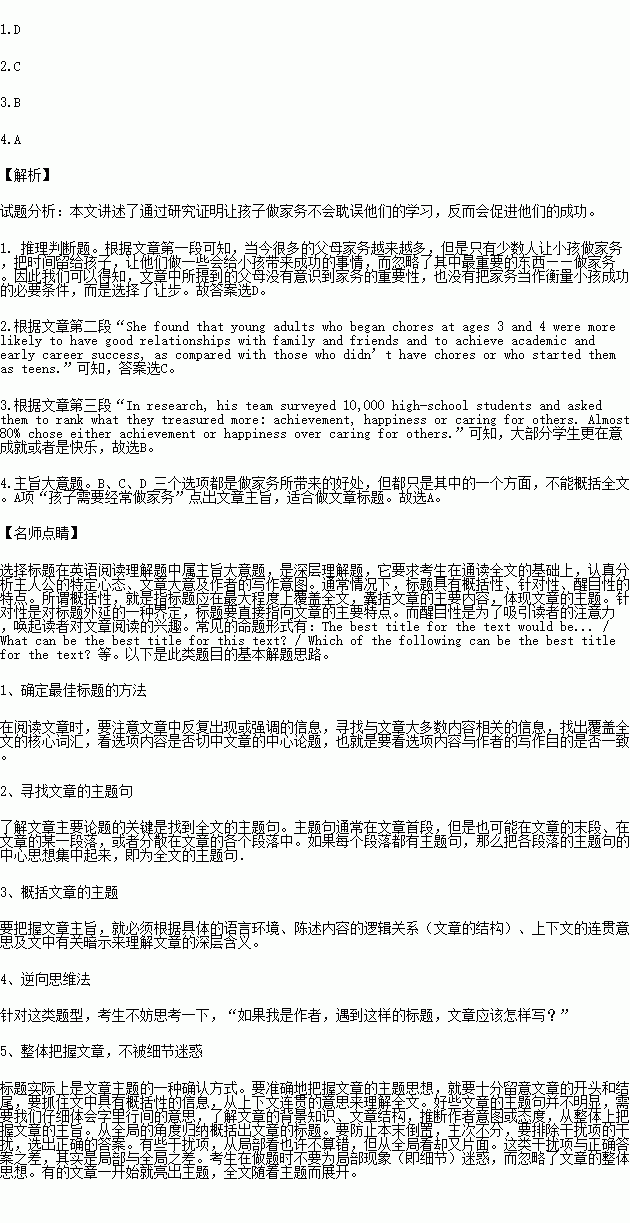题目内容
Today’s demands for measuring childhood success have chased household chores from the to-do lists of many young people. In a survey of 1,001 US adults released by Braun Research, 82% reported having regular chores growing up, but only 28% said that they require their own children to do them. “Parents today want their kids spending time on things that can bring them success, but ironically, we’ve stopped doing one thing that’s actually been a proven predictor of success—and that’s household chores.” says Richard Rende, a developmental psychologist.
Giving children household chores at an early age helps to build a lasting sense of mastery, responsibility and independence, according to research by Marty Rossmann, professor at the University of Minnesota. In 2002, Dr. Rossmann analyzed data from a longitudinal(纵向的) study that followed 84 children across four periods. She found that young adults who began chores at ages 3 and 4 were more likely to have good relationships with family and friends and to achieve academic and early career success, as compared with those who didn’t have chores or who started them as teens.
Chores also teach children how to be empathetic(感同身受的) and responsive to others’ needs, notes psychologist Richard Weissbourd. In research, his team surveyed 10,000 high-school students and asked them to rank what they treasured more: achievement, happiness or caring for others. Almost 80% chose either achievement or happiness over caring for others. As he points out, however, research suggests that personal happiness comes most reliably not from high achievement but from strong relationships. “We’re out of balance,” says Dr. Weissbourd. A good way to start re-adjusting priorities(优先事项), he suggests, is by learning to be kind and helpful at home.
The next time that your child asks to skip chores to do homework, resist the urge to let him or her off the hook. Being slack(懈怠的) about chores when they compete with school sends your child the message that grades and achievement are more important than caring about others. What may seem like small messages in the moment but add up to big ones over time.
1.What can we learn from the first paragraph?
A. Parents today have recognized the importance of chores.
B. Most parents today think chores are necessary for measuring kids’ success.
C. Most adults require their children to do regular chores now.
D. Doing regular chores can help children to succeed.
2.What can we conclude from Rossmann’s longitudinal study?
A. Children will not achieve academic and career success with few chores.
B. It makes little difference when children begin chores.
C. Chores should be given to children at an early age.
D. Young adults beginning chores as teens are more likely to be responsible.
3.What do students value more according to Weissbourd’s survey?
A. Responding to others’ needs.
B. Achieving high achievements.
C. Practising kindness and giving help.
D. Building strong relationships
4.What can be the best title for the text?
A. Children need regular chores
B. Children need to be independent
C. Household chores build up relationships
D. Chores bring children responsibility


 ),并在其下面写出该加的词。
),并在其下面写出该加的词。